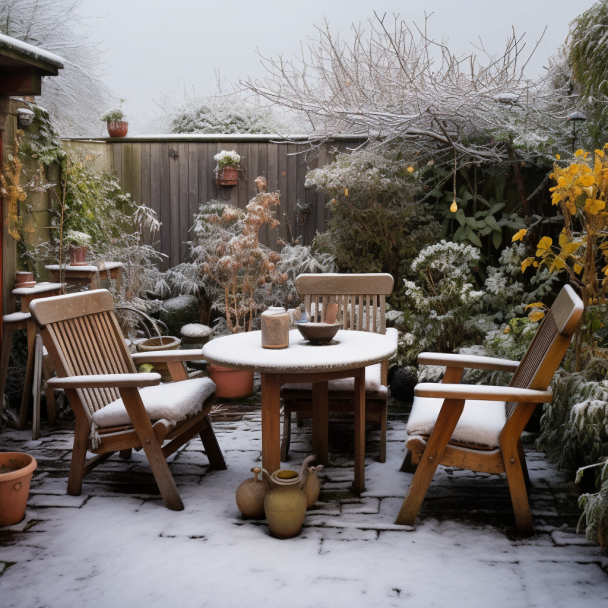As autumn approaches and the days grow shorter, it’s time to start thinking about preparing your garden for the colder months ahead. While summer is all about growth and abundance, winter is a time of rest and renewal for our gardens. With the right preparations, you can ensure your garden survives the winter and is ready to burst back into life in spring.
This post contains affiliate links which means we may make commission from any qualifying sales with no extra cost to yourself.
Why Prepare Your Garden for Winter?
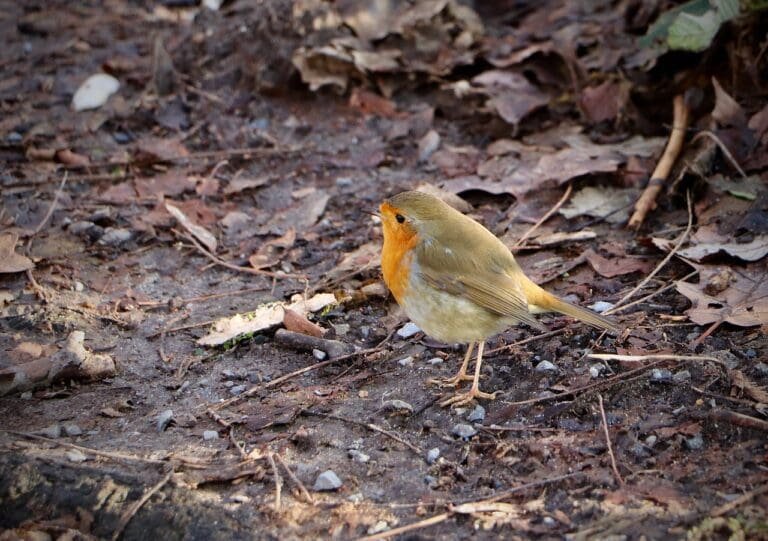
Preparing your garden properly each autumn will help protect plants from damage, prevent pests and diseases from overwintering, and set up your garden for a successful spring. Key reasons to prepare include:
Protecting plants from cold damage – Many tender plants need extra insulation over winter. Adding mulch helps regulate soil temperature. Wrapping vulnerable trees or shrubs protects them from frost and wind.
Avoiding pest problems – Clearing away debris removes places where slugs and other pests can hide. Pruning removes disease-prone branches.
Improving drainage – Heavy rainfall can waterlog soil, damaging roots. Adding organic matter or digging in grit helps improve drainage.
Supporting wildlife – Leaving seedheads and hollow stems provides food and shelter for birds and insects. Putting out food encourages birds to natural pest controllers.
Getting a head start on spring – Preparing beds, repairing structures, and planting spring bulbs in autumn means you can relax over winter and be ready for the new season.
16 Ways to Prepare Your Garden for Winter
To get your garden ready for winter, there are some key tasks you should aim to complete in autumn:
1. Clear Up Fallen Leaves and Debris
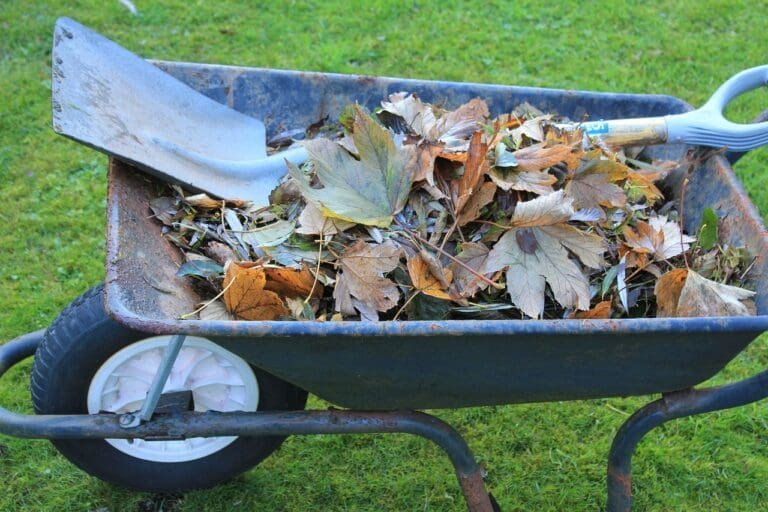
Autumn storms will cause leaves, twigs and other plant debris to accumulate rapidly. Leaving this on beds or lawns over winter can cause rot and harbour slugs. Regularly raking up fallen leaves reduces pests while letting moisture and sunlight still reach soil and plants.
Remove weeds before they set seed. Lift up spent annuals and cut back faded perennials to remove hiding places for slugs. Compost healthy plant debris or add leaves to your leaf mould bin
2. Prune for Winter
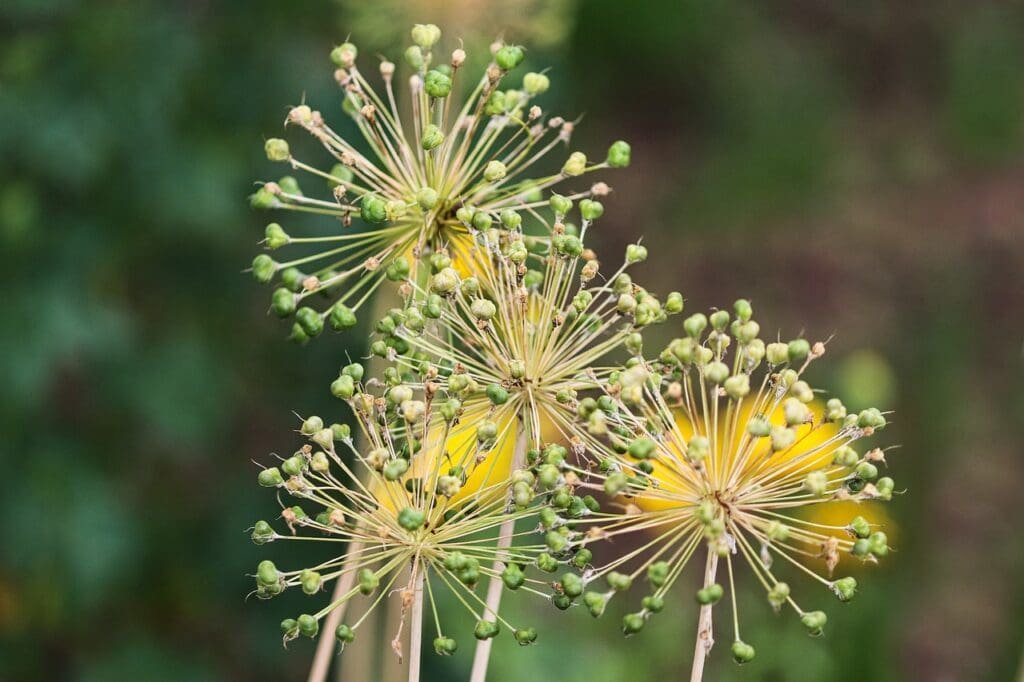
Autumn is an important time for pruning many plants in preparation for winter. Pruning removes damaged, diseased and congested growths, opens up the centres of shrubs and trees, and restricts excessive size.
Shrubs like buddleia, caryopteris, fuchsia and lavatera all benefit from a trim back to reduce wind rock damage. Tender perennials like penstemons and salvias should be cut right back to basal shoots. Climbers like roses and vines need their sideshoots shortening.
However, avoid cutting back ornamental grasses and allium foliage until spring, so you can enjoy their presence in winter. Likewise, leave healthy seedheads and stems of herbaceous plants for winter bird food sources and shelter.
3. Plant Spring Flowering Bulbs
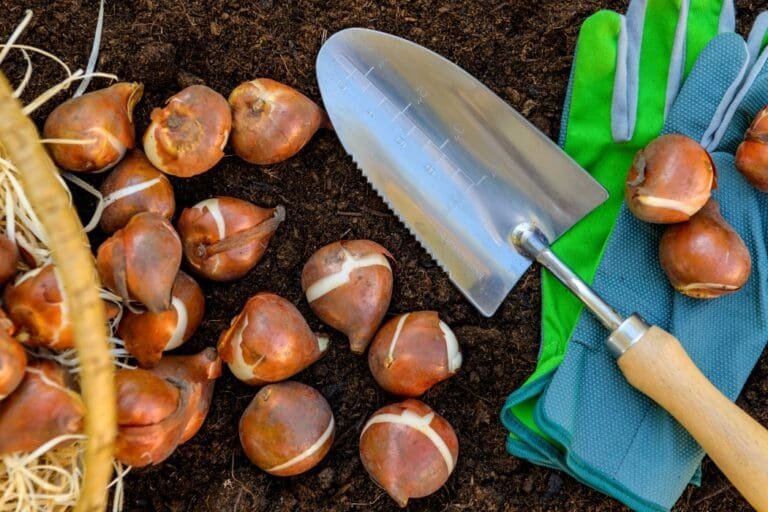
Autumn is the ideal time to plant bulbs like daffodils, tulips and crocus that flower in spring. Prepare the soil by forking over and add in some organic matter like compost or well-rotted manure if needed. Plant bulbs at the correct depth and spacing for the variety. Adding a slow release fertiliser boosts growth. Planting in drifts creates a lovely spring display.
4. Protect Ponds for Winter
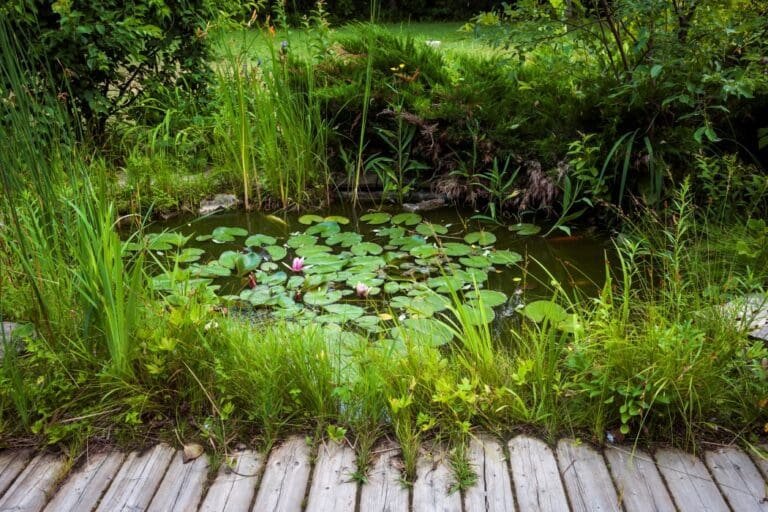
Remove dead leaves and clear pond plants like lilies each autumn. Put oxygenating plants in baskets so you can lower them deeper over winter. Stop feeding fish when water cools below 10°C. Use a pond net to remove fallen leaves regularly and install a pond heater or de-icer to prevent freezing over.
5. Insulate Tender Plants

Vulnerable plants like bay trees, cordylines and potted olive trees need protection from freezing winds and frost. Wrap the stems in horticultural fleece and surround pots with insulation like straw or polystyrene packing chips. Alternatively, move pots closer to the house or under cover.
6. Plant a Wildlife-Friendly Winter Border
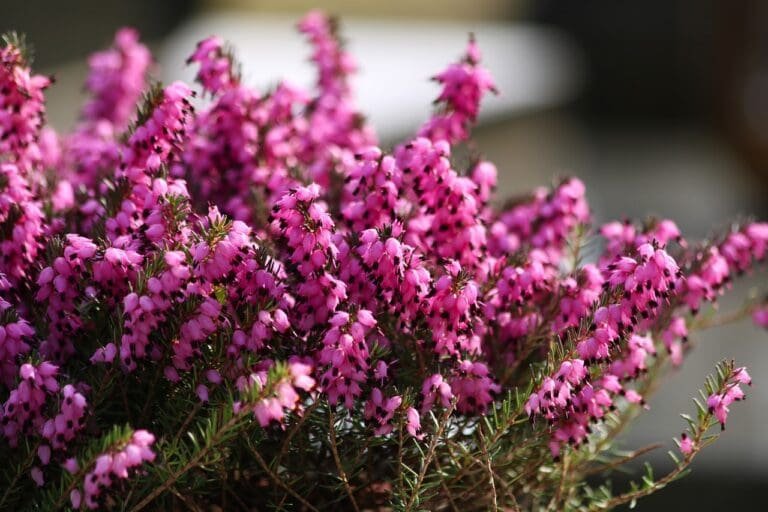
Create a dedicated space filled with winter-flowering plants, evergreens and seed heads to support wildlife through the colder months. Focus on plants like winter-flowering heathers, hellebores, ivy, skimmia, viburnum bodnantense and mahonia. Leave the seed heads and stems of perennials and grasses untouched for birds to forage.
7. Improve Drainage in Beds and Borders
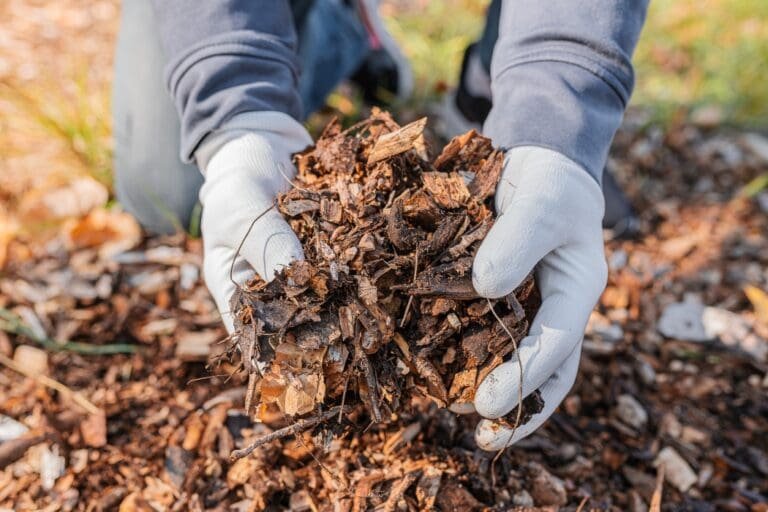
Heavy winter rain can cause waterlogging, leading to rotting roots and plants dying. Fork over beds and borders in autumn, breaking up compaction. Add extra organic matter like garden compost to improve moisture retention. For very heavy soils, mix in grit or sharp sand.
8. Repair Paths and Structures

Autumn is a good time to maintain the hard landscaping features like paths, walls, pergolas and sheds. Sweep paths and terraces to remove moss and leaves that can make surfaces slippery underfoot. Repair and repoint brickwork. Maintain wooden structures by fixing loose posts, painting or treating with preservative to protect from winter rains.
9. Move or Repot Container Plants

Container plants are more vulnerable to cold weather as their roots are more exposed. Move pots closer together or closer to the house for added insulation. You can also huddle pots together inside a temporary enclosure or cover the pots with insulation. Alternatively, repot into a larger container or transplant into the garden border.
10. Prepare Vegetable Patches

Remove remaining crop debris and weed thoroughly. Dig over the soil, breaking up any compaction. Sprinkle on lime to boost fertility and add organic matter like garden compost or manure. Cover beds with black polythene or a thick mulch layer to supress weeds. Broad beans and garlic can be planted in autumn ready for an early crop.
11. Service your Garden Machinery

Give mowers and other power tools some pre-winter TLC. Clean equipment thoroughly, change oil and filters as required. Replace strimmer wire and sharpen tools. Fuel tanks should be drained or fuel stabiliser added for winter storage. Charge batteries fully and store in a cool, dry place.
12. Prepare Lawn Areas

Rake up fallen leaves regularly with a lawn rake. Brush dense moss using a stiff broom. Spike compacted areas using a garden fork. Apply an autumn lawn feed to encourage strong root growth. Keep mowing until growth stops, gradually lowering the blades for the final cut. Leave the grass 2-3cm long over winter
13. Cover or Store Outdoor Furniture
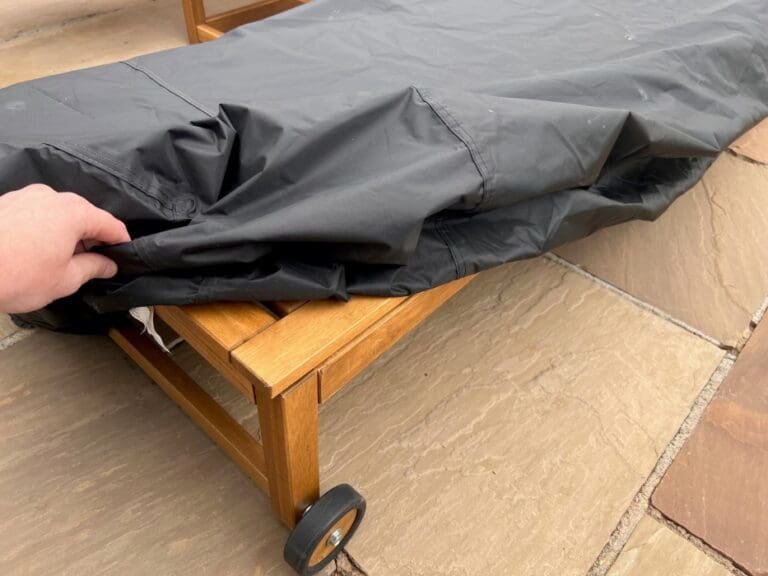
Protect outdoor furnishings like furniture, barbecues and ornaments from winter rain and frost damage. Move furniture into sheds, garages or undercover if possible. Otherwise, use heavy duty furniture covers secured in place to keep off the rain. For items that can’t be moved like stone statues, cover with plastic sheeting or tarpaulins. Weigh down the covers to prevent wind damage. Drain and cover barbecues and outdoor kitchen equipment to prevent rusting over the wet winter months.
14. Protect Ponds from Falling Leaves
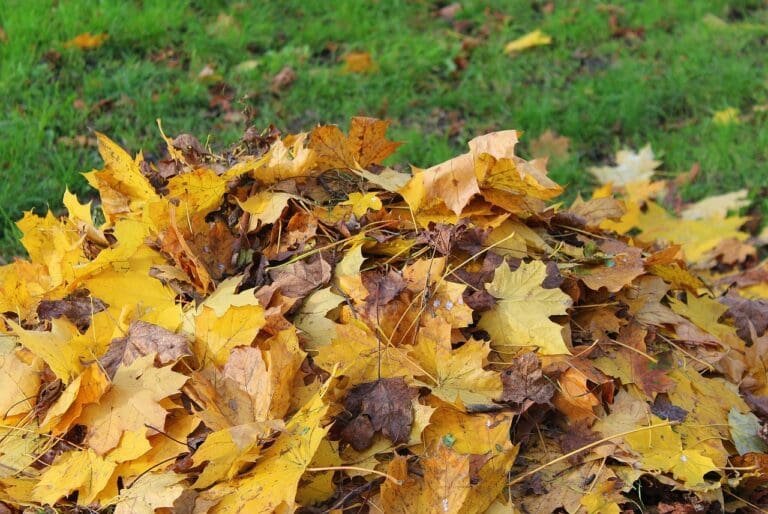
Install pond netting over your pond at the start of autumn. This prevents falling leaves from accumulating on the water surface and rotting. Removing large leaf fall with a pond net allows sunlight to still reach underwater plants. Clean pumps and filters so they function effectively over the cold season.
15. Put Out Food and Shelter for Wildlife
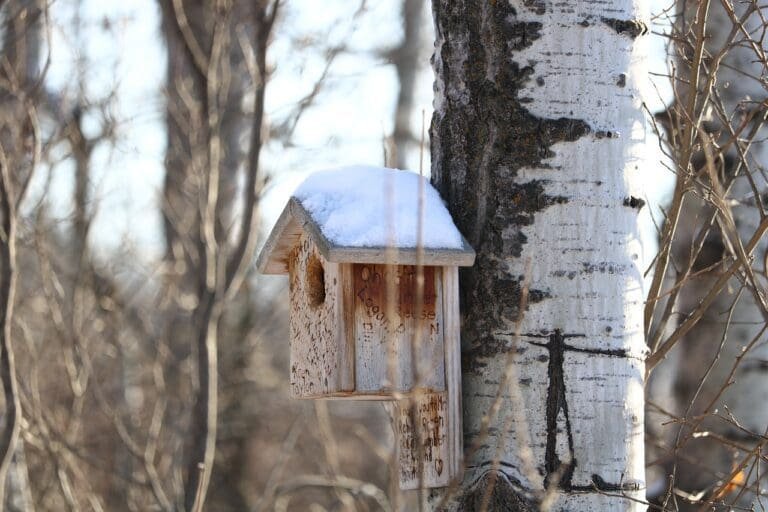
Help wildlife survive over winter by putting out food and water. Leave fallen apples from fruit trees to provide a feast of free food. Invest in quality bird food and site feeders where cats cannot ambush. Ensure a clean water supply by installing a solar powered pond pump or heated bird bath. Put up nesting boxes ready for spring and don’t cut back seed heads so birds can forage.
Winter Protection Techniques
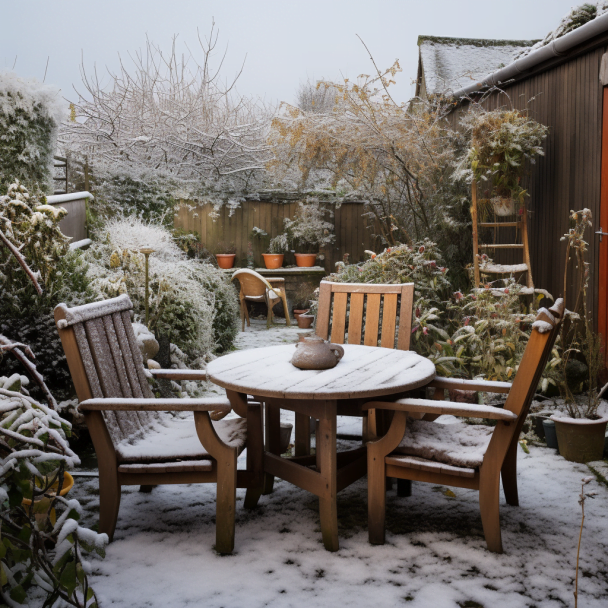
As well as general garden preparations, you may need to take some additional steps to protect vulnerable plants from cold damage:
Wrapping Shrubs
Wrap fleece or hessian around the stems of half-hardy shrubs for insulation. Avoid using plastic wraps that can cause condensation and rotting. Burlap is ideal as it lets air circulate while providing protection. Check ties regularly and remove in early spring once risk of frost has passed.
Insulating Pots
Potted plants lose heat from their exposed sides. Bubble wrap provides excellent insulation – wrap it around containers and place pots together to retain warmth. Alternatively, surround pots with polystyrene chips, straw bales or use horticultural fleece. Make sure you can remove covers easily to water plants when needed.
Protecting Trees
Young, thin-barked trees need protecting from winter frosts. Use tree wrap guards around the trunks – spiral guards are best as they allow the trunk to expand. Insulating with straw bales around the base also helps. Stake tall or top heavy trees to prevent wind rock.
Cloches and Cold Frames
Portable cloches, cold frames and mini greenhouses provide movable protection for tender plants. Ventilate on sunny days to prevent overheating. Use horticultural fleece inside for added insulation and to hold cloches in place during windy weather. Keep an eye out for pests like slugs.
Temporary Structures
Build simple wooden frames covered in polythene sheeting to make temporary greenhouses over autumn and winter. This is ideal for sheltering pots and tender plants in beds like grasses and cannas. Make sure water can drain freely from the structure and ventilate to avoid overheating.
Mulching Borders
Apply a 5-10cm thick mulch layer over borders to insulate plant roots from frost and cold winds. Organic mulches like wood chips, shredded bark and leaf mould work well. Avoid using grass clippings which can rot down and smell. Top up mulch levels if needed after heavy rain over winter.
Begin Preparing for Spring

The winter months are also a good time to make plans for the coming spring season:
Order seeds – browse catalogs and order seeds for vegetables and flowers so you have them ready for sowing when needed. Opt for F1 hybrid and disease resistant varieties where possible.
Plan new designs – sketch out ideas to refresh borders, create a new wildlife pond, build raised beds or develop any other garden projects.
Improve soil – dig in organic matter like well-rotted manure and compost to enrich soil in preparation for planting.
Repair lawns – carry out maintenance like scarifying, aerating and topdressing to revive tired lawns ready for spring growth.
Maintain tools – clean, sharpen and service all your garden tools. Replace any that are worn out ready for the busy growing season ahead.
Check structures – ensure supports are intact for plants like climbers. Repair and improve fencing, trellis, pergolas, sheds and other structures.
Control weeds – clear annual weeds and use mulch layers to suppress early perennial weeds before they take hold.
Enjoying the Winter Garden

While the garden lies dormant, there are still ways to enjoy it over winter:
Plant a winter border filled with colourful shrubs like dogwood, birch, willow and winter-flowering heathers. Evergreen ferns also provide year-round texture.
Create visual interest with colourful winter pots and containers. Plant with berried shrubs, seasonal bulbs and violas or cyclamen.
Add lighting such as festoon lights over a pergola or path to create a magical feel after dark. Light up key architectural plants and structures.
Natural materials like branches, sticks and evergreens look beautiful with a covering of frost or snow. Capture seasonal photos of frosted seed heads and landscapes.
Leave seed heads and stems of herbaceous plants over winter to provide food and shelter for birds. Site feeders where you can watch bird activity.
Track what is happening in your garden by keeping a seasonal journal. Include photos and observations on wildlife, plants in flower or leaf and jobs completed.
With the right preparations in autumn, you can ensure your garden stays healthy and protected all winter long. Set your garden up for success so you can enjoy an abundant growing season when spring arrives.
Frequently Asked Questions
Q. How do I prepare my garden for winter UK?
Preparing a garden in the UK for winter entails a series of steps to ensure plant health and a good start for the next growing season. Begin by removing spent summer crops and dead plant material to reduce the risk of disease and pests. Prune back perennials that have finished blooming and protect delicate plants with horticultural fleece or bubble wrap. Clean and store garden tools, and consider adding a layer of compost or well-rotted manure to enrich the soil for the next season. Finally, consider setting up bird feeders to support local wildlife during the colder months.
Q. How do you prepare a no dig garden for winter?
Preparing a no-dig garden for winter is focused on minimal soil disturbance and layering. Start by removing any dead plants or debris on the surface. If there are any perennial weeds, try to remove them gently. Next, apply a thick layer (about 4-6 inches) of organic matter such as well-rotted compost or manure on top of the existing soil. This serves as a mulch, suppressing weeds and gradually enriching the soil beneath. Over this, you can add a layer of straw or leaf mulch if desired. The idea is that over winter, the organic matter will break down, and worms will pull the nutrients down, enriching the soil without any digging.
Q. What do I do with my garden in the winter UK?
During the winter in the UK, while the garden might seem dormant, there are still tasks to consider. Water plants sparingly, especially those in containers, as they require less moisture during this time. Protect sensitive plants from frost using fleece, cloches, or straw. Winter is also a great time for planning: peruse seed catalogues, plan your crop rotations, and think about any structural changes you’d like to make in the garden. Lastly, take the time to clean, sharpen, and oil your garden tools, so they’re ready for the spring season.
Q. When should I tidy my garden for winter UK?
Tidying up your garden for winter in the UK should ideally start in late autumn, typically around late October to early November, once most of the deciduous trees have dropped their leaves and the majority of summer crops have been harvested. This timing allows you to clear away spent plants, rake up leaves, prune back perennials, and prepare the soil before the first hard frosts set in. It also ensures that the garden is neat and less hospitable to overwintering pests and diseases. Remember, though, while tidying up, it’s good to leave some areas untouched, like leaf piles or log stacks, to provide habitats for beneficial insects and wildlife.

